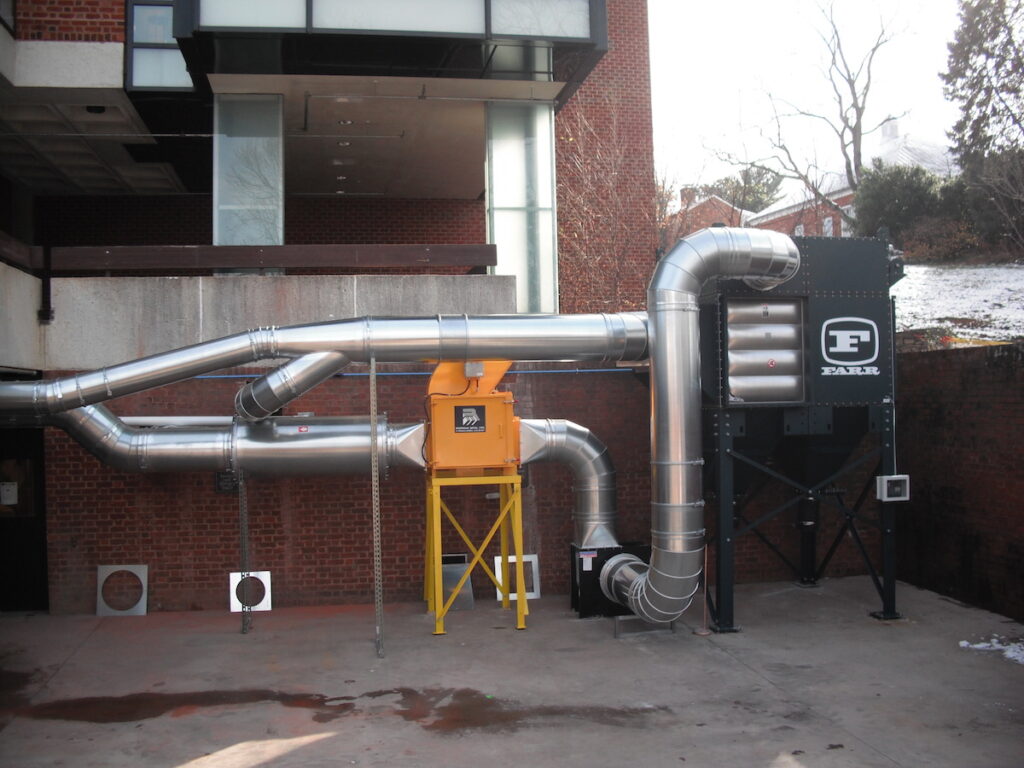
This case study looks at a pulse jet cartridge dust collector installed at a university wood working shop to capture wood dust. The wood dust is filtered through the dust collector and returned to the wood working shop clean and safe.
The university was also adding a large CNC router table that would add a 4,500 cfm air requirement to their dust collection needs. The university decided on a Farr GS16 cartridge dust collector provided by Swaim and Associates. Precision Industrial was called in to take care of the installation and help with layout design and engineering. The university was not aware of all the necessary safety precautions that needed to be taken when collecting and storing a flammable dust, such as wood. The National Fire Protection Agency has a set standard that needs to be followed when designing a dust collecting system.
The system must be equipped with a spark detection and high speed abort gate system when returning the clean air back to the building. This keeps the chance of an explosion or fire low and prevents the fire from entering the building through the ductwork that returns the clean air to the building. The style of collector that was used for this application was a pulse jet cartridge dust collector. The cartridge that filters the air is a cylindrical filter with a pleated media. This style of collector fits more square feet of filter material in a small footprint then traditional baghouse collectors. This was important to the university because available space was limited for the equipment. The cartridges are cleaned by a blast of compressed air which knocks the dust down into the hopper of the dust collector. The dust then falls into the collection barrels. One of the largest challenges with this project was the low ceiling and available space for the ductwork. The CNC router has to have flex hose to allow for movement of the cutting head. A trolley system was installed to hold the flex hose up high off the cutting table while still allowing the flex hose to travel with the head of the router. Clamp together ducting was used for the installation. This reduced installation time and allowed the flexibility to offset around obstructions with ease.
There was conduit, lights, sprinklers, and other obstructions in the same area where the ductwork had to be run. Having the ability to quickly clamp the ducts and elbows in place was a huge benefit when it came time to make the ductwork fit. All the university machines were ducted to the new central system. There were also floor sweeps strategically placed around the shop to make clean up even more efficient. Now all the dust is captured and taken outside to a single collection point making housekeeping a breeze and keeping the students safe and comfortable.
